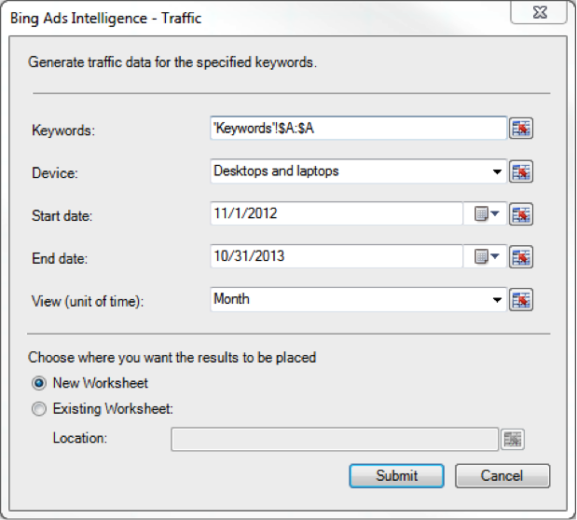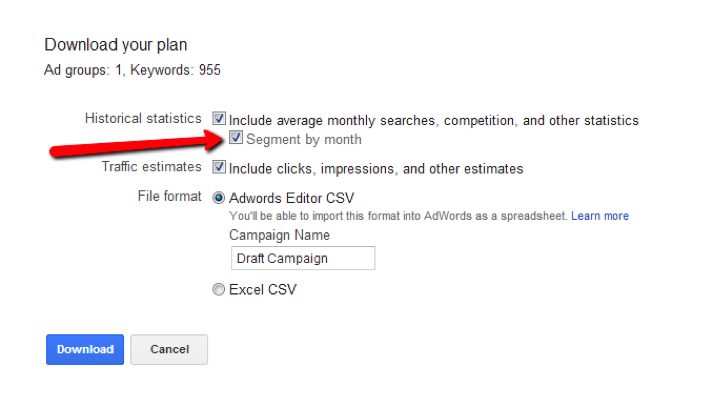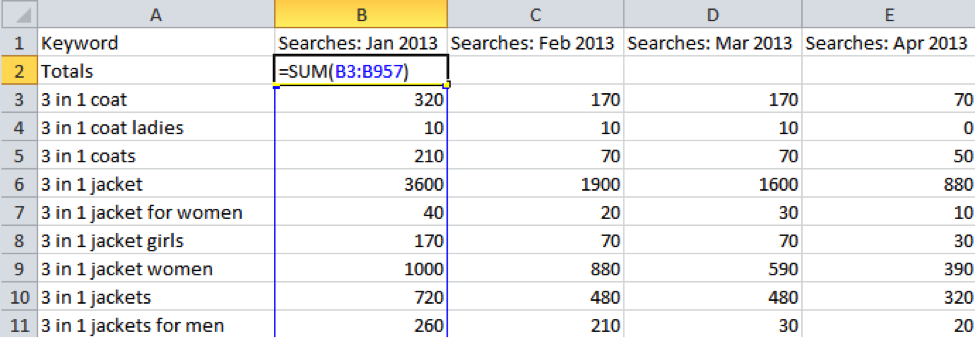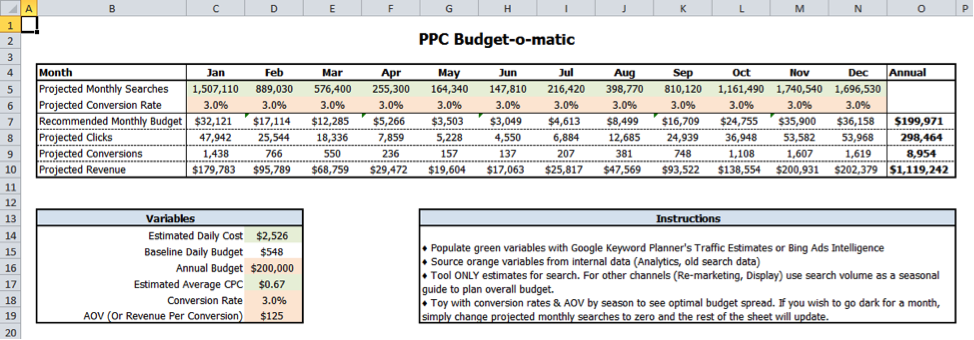Ahh the beginning of winter – the start of cold weather, stuffy noses and chapped lips always reminds me that this is a special time of year. Tis the season for shopping, eating and holidays sure, but it’s also the most challenging time of the year: budgeting & planning season.
Often be thought of as the bane of existence, budgeting season can be a trying, repetitive and challenging time. How are we supposed to predict what’s going to happen, by month, for an entire calendar year?!? Whatever shall we do?
Have no fear! Love ‘em or hate ‘em, the Google Keyword Planner and Bing Ads Intelligence tools give you the data you need to plan your PPC budgets. I’ve put together a strategy (and a shiny new excel template) to help you easily appease your boss or client come budgeting season.
Step 1: Collect keywords. Get everything you’re running (or plan to run). Make sure they’re broken down by match type and include negatives.
Step 2: Estimate. Drop the keywords into the Google Keyword Planner and plug in a max bid that’s roughly around what you’d hope to pay for a click – don’t worry about being too precise with the bid as it’s primarily designed to show you what’s available rather than helping to space your budget out.
Download the estimates. Be sure to include all segments including monthly search volume and segment by month.
Step 3: Organize.
The excel doc that Google will spit out is kind of a mess, I won’t lie. To make it easier to work with, I’d recommend cleaning out any columns that you don’t need, and subtotaling. For this exercise, the only columns that you need are searches by month, daily cost and estimated clicks.
Searches by month will likely be out of order and will start from the year prior. Organize them by calendar month to make the data easier to work with. They’ll also likely exclude the previous month, in this case October 2013. Bummer, but we can estimate.
Step 4: Subtotal.
Total all search volume for each month – this will give you a rough idea of what Google sees from a trend perspective, and what you can anticipate the consumer landscape to look like
For the missing month, I recommend simply averaging the 2 months before and 2 months after. In this case, I’d estimate October search volume but taking the average of Aug/Sept and November/December. Not a perfect science by any means, but it’ll do.
Step 5: Budget!
I took a tool that I’ve used in the past and made it a bit easier to use for the masses. Enter Aaron’s PPC Budget-o-matic template. The tool is designed to take a pre-planned annual budget and allocate it by month based on forecasted demand. There are a few variables that you’ll need to enter from internal data, and a few that are populated with engine estimates.
Engine Source:
- Projected Monthly Searches: Use the totals you got from the Keyword Planner or Ads Intelligence. These estimates are the key variable for allocating budget over the year.
- Estimated Daily Cost: More included for reference, but this will show you what the engines think is available from a spend perspective. If the estimate is wildly above or wildly below what you have available in the baseline daily budget column, you may want to re-evaluate your keyword selection.
- Estimated Average CPC: Simply use the engine column here – this will populate forecasts for clicks and conversions. You can either use the estimates from the engine, or your own internal data.
Internal Sourced:
- Annual budget: How much money you have.
- Conversion rate & AOV: This may vary by month – by default these variables are flat by month in the tool, but take a look at your data to see if they vary. Toy with them to see the best overall budget spread.
- Once you plug these variables in, the white sections will populate accordingly and help you plan.
Step 6: Bing Ads.
Follow the same process from Step 2-5 using the Bing Ads Intelligence tool to get estimates for Bing. Use the “traffic” research option, and set the date range to the last year for accurate data. The data will be a little ugly just like the Keyword planner, but once you organize you’ll be able to follow the same steps.
Re-marketing Not Included
Unfortunately, it’s virtually impossible to accurately predict audience size or spend for Remarketing efforts. But that won’t stop us from trying. To use the tool for Re-marketing, plug in historical site traffic into the “search volume” section to get an idea of spread. If the site is brand new, you can safely estimate about 10% of budget that you’re planning for search could be spent on Re-marketing. Use $1 as a baseline CPC.
Flaws & Caveats:
There are a few very obvious caveats/flaws with this method that are worth noting:
- The estimators produce… estimates. Take them with a grain of salt, and plot against internal data where possible
- The tool only accounts for search, and does not include GDN, Remarketing, Facebook, LinkedIn etc.
- Doesn’t account for PLA’s, though I anticipate budget spread for PLA’s will likely follow search patterns.
- Conversion rates & AOV/Revenue per Conversion are not flat by keyword/campaign/engine. Use your best judgment here; personally I try to be a bit conservative with projections to account for any variability.
Bonus: Always include a “slush fund” in your budgets. Don’t allocate everything and set it in stone. If there’s one thing that we PPC’ers know, it’s that Google loves to keep us on our toes. If you lock your budget in place before the year even starts, you won’t have room for testing and tweaking.
I hope this method will help the PPC Hero community with upcoming budgeting woes. If you’d like to toy around, simply download the PPC Budget-o-matic and see what it says!







